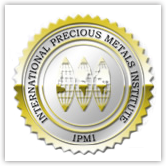With the recent volatility on the market and the activity in china it a good time to talk about whats happening in the metal markets.
A few key points:
-Metals prices have finally come back off of the lows we have been sitting at for the last 2 months
-China has had a extremely serious correction in their stock market, comparable to the American crash of 1929
-China is currently buying 50 tons of gold per month.
While metal prices have been slipping lower due to the strengthening of the dollar over the last year or so, the trend is now reversing with all of the economic unrest both nationally and abroad. The FOMC just had their meeting yesterday on 8/20/15, and the news from Yellen was that the interest rates would not go up, again. The Fed has been threatening to raise interest rates but that threat is no longer suppressing the market as it was. Hopefully this is the start of a run for our precious metals as the stock market continues to poise for a correction.
China has just had a catastrophic event in their stock market. Basically over the last year and a half thier markets have gone up over 150% and was spurred on by the Chinese creating their own bubble of margin buying and using theoretical gains to leverage further. Over the course of about a week over a trillion dollars vanished as the stock market fell, with the Chinese government stepping in to try and slow its descent. When the market reopened it continued to fall further still. This has lead to China devaluing their currency not once but twice in two days, each time by 1.6 percent. This devaluation is supposed to help Chinese exports stay cheap and spur some growth.
Although the Chinese people have been ht hard by the stock market crash, along with its ripple effects of loans being called on businesses and properties, the central government has not changed their sentiment about buying gold. They are currently taking in over 50 tons of gold per month.
Further moves in the precious metal markets hinge on not only our own stability and stock markets, but that of those abroad in both china and the European union.




![[Live Silver Price]](https://www.kitconet.com/charts/metals/silver/t24_ag_en_usoz_2.gif)
 `
`